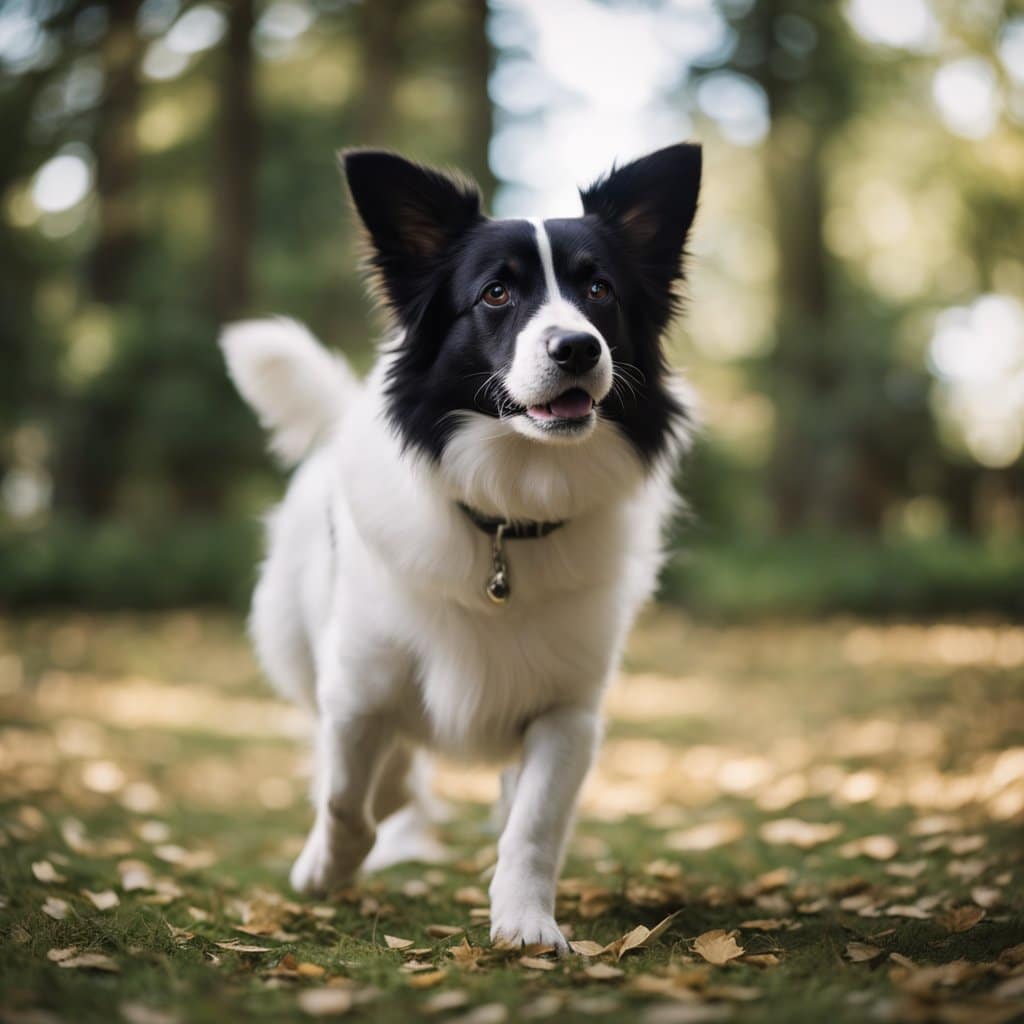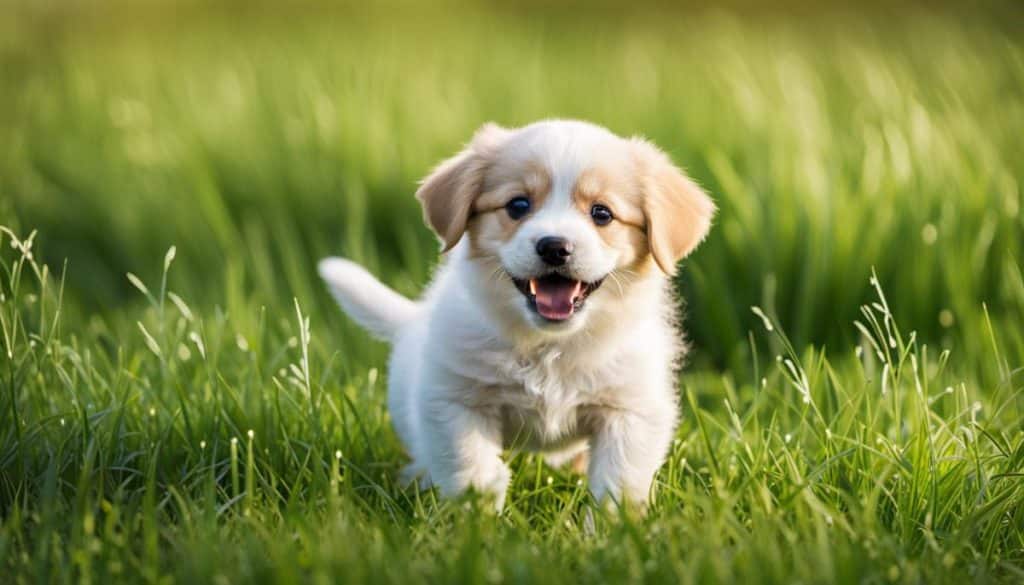
Dogs use their tails to communicate a lot of important information. A dog’s tail position can reveal a lot about their mood and intentions. For example, a high and wagging tail often means your dog is happy and excited. On the other hand, a low or tucked tail can indicate fear or submission.

When your dog’s tail is horizontal and relaxed, it usually means they’re paying close attention to their surroundings without feeling threatened. A stiff tail, whether high, low, or straight out, often signals caution or alertness. Understanding these subtle differences can help you better interpret your dog’s behavior and respond appropriately.
Dog tail positions can also change quickly depending on their social interactions. For instance, a high, stiff tail might indicate dominance, while a low, wagging tail can show submission. Paying attention to both the position and movement of your dog’s tail will provide you with valuable insights into their emotional state and intentions in various situations.
Key Takeaways
- Tail position reveals a dog’s mood and intentions.
- A relaxed tail shows attentiveness, while a stiff tail signals caution.
- Observing tail movements helps decode social interactions.
Understanding Dog Tail Positions
Dogs use their tails to express a wide range of emotions and states of mind, from joy and excitement to fear and submission. By learning to interpret these signals, you can better understand your dog’s needs and feelings.
Neutral Tail Position
A dog’s tail in a neutral position is typically held straight out from the body or slightly down. This relaxed wag indicates the dog is in a calm, content, or curious state. Neutral tails are common when dogs are familiar with their surroundings and feel comfortable. This tail position often suggests trust and relaxation.
In some cases, dogs might hold their tails differently based on their breed. For example, a Greyhound might naturally hold its tail lower than a Beagle.
High, Wagging Tail
When a dog holds its tail high and wags it energetically, it often signals happiness and excitement. This position can indicate that your dog is eager to play or engage with you. A high, wagging tail is a sign of joy and anticipation.
If the tail is stiff while wagging, it could suggest tension or aggression. It’s important to consider other body language cues, like ear position and facial expressions, to understand the dog’s feelings fully.
Low and Relaxed Position
A tail held low and relaxed often indicates a state of calmness and comfort. Dogs with their tails in this position are generally feeling secure and content. This is common when dogs are resting or lounging in a familiar, safe environment.
This tail position signals trust and well-being, making it a good sign that your dog feels at ease.
Tucked Tail and Its Implications
A tucked tail, where the tail is positioned between the legs, usually signals fear or anxiety. Dogs use this position when they are scared, feeling submissive, or experiencing pain or discomfort. This posture often accompanies other signs of stress or insecurity, like cowering or avoiding eye contact.
Understanding this tail position can help you better support your dog during stressful situations.
Stiff Tail Movements
When a dog’s tail is stiff and held straight out or upwards, it can be a warning sign of tension or aggression. This position indicates that the dog is alert and might be feeling threatened. Stiff tail movements, especially if accompanied by a rigid body posture, suggest that the dog might react fearfully or defensively.
Approach dogs with stiff tails cautiously, observing other body language cues for more information.
The Curled Tail
Some dogs have naturally curled tails due to their breed, like the Shiba Inu or Pug. For others, a curled tail can signal confidence and alertness. If the curl is paired with a relaxed body and a soft wag, it often means the dog is content and focused.
A tightly curled tail, especially if held rigid, may indicate excitement or arousal, so pay attention to the context and additional signals.
Rapid Tail Movements
Rapid tail wagging often indicates extreme excitement and happiness. Dogs adopt this quick, energetic wagging during interactive play or when they greet someone they love. This tail movement shows high levels of joy and anticipation, making it a positive sign.
Be mindful that rapid wagging can sometimes be asymmetrical, showing uncertainty or mixed emotions.
Symmetry and Asymmetry in Tail Wagging
Symmetrical tail wagging, where the tail moves equally to both sides, typically signals happiness and interest. Dogs wag their tails symmetrically when they are engaging in friendly or positive interactions. In contrast, asymmetrical wagging, where the tail favors one side, can indicate uncertainty or nervousness.
Observing symmetry in tail wagging helps you discern between pure excitement and more complex emotions.
By paying attention to these different tail positions and movements, you can better appreciate the nuances of your dog’s expressive body language. This understanding will strengthen your bond and improve communication between you and your furry friend.
Dog Tail Positions in Social Interactions
Understanding dog tail positions is crucial in social interactions with dogs. It helps you read their body language and recognize signs of playfulness, tension, or aggression.
Approach and Greeting
When a dog greets you with their tail held high and wagging energetically, they are excited and happy. This wagging tail signals trust and playfulness. You may also notice their body is relaxed and their eyes are soft.
A dog with a horizontal and relaxed tail during an approach is paying attention to their surroundings but remains calm. A relaxed posture usually means the dog is open to interaction but not overly excited.
In a friendly encounter, a dog may also offer you licks and maintain a soft, droopy tail, indicating comfort and friendliness.
Indications of Discomfort
A dog showing discomfort usually keeps their tail low or tucked between their legs. This position suggests fear or anxiety. The low or tucked tail may also be accompanied by other signs such as ears back or avoiding eye contact.
Tension in the tail and a stiff body indicate unease. You should approach a dog with these signs cautiously, as they might feel stressed or threatened.
Discomfort can also be seen in a tail that is still and not wagging. This may mean that the dog is unsure about the situation or person in front of them.
Signs of Fear or Submission
When a dog is fearful or feeling submissive, their tail is usually low and held close to their body. This low against the hind legs position, combined with behaviors such as crouching or rolling over, shows submission.
A submissive dog might lick their lips or avoid direct eye contact. Their overall body language indicates that they are not a threat and are seeking to avoid conflict.
Telling signs of extreme submission can include a tucked tail, low body posture, and possibly trembling. Recognizing these signs helps in easing the dog’s anxiety through gentle and calm interactions.
Display of Aggression or Warning
A dog showing aggression or issuing a warning will have a stiff and raised tail. This position is a clear warning sign and can be accompanied by other aggressive signals such as raised hackles, bared teeth, or growling.
In this scenario, the dog’s body is tense and rigid, indicating readiness to attack if provoked. It’s important to back off and avoid further triggering the animal.
Other signs of aggression are a direct stare and a forward-leaning posture. These combined with a stiff tail show that the dog is not comfortable and is prepared to defend itself if necessary.
Understanding these tail positions can guide you in safely navigating encounters with dogs, promoting mutual trust and avoiding potential conflicts.
Behavioral and Physical Factors Influencing Tail Position
The position of a dog’s tail is influenced by various factors, including breed traits and physical health. Understanding these elements helps in better interpreting your dog’s emotions and needs.
Influence of Breed and Tail Type
Different breeds have different tail types, which significantly influence how their tails are positioned and moved. For example, breeds with curly tails, such as Pugs or Shiba Inus, often have tails that sit higher naturally. In contrast, breeds with long, straight tails have a wider range of motion. Tail docking, common in breeds like Dobermans and Boxers, can impact how dogs communicate through their tails. Knowing your dog’s breed-specific tail traits will help you understand their unique ways of signaling.
The Role of Mental Stimulation
A dog’s mental state greatly affects tail positioning. Mental stimulation through play and interaction is vital for their overall well-being. When a dog is mentally stimulated and happy, you might see a relaxed or excited tail wag. On the other hand, a lack of mental activity can lead to stress and tension, causing the tail to be held low or tucked. Ensuring your dog has enough fun and challenges can maintain a positive emotional balance, reflected in their tail positions.
Physical Well-being and Tail Position
Physical health is another crucial factor in tail positioning. Pain or discomfort can cause a dog to hold their tail differently. For instance, a dog experiencing pain may tuck their tail between their legs. Regular visits to the veterinarian can help detect underlying issues affecting your dog’s tail position. Pay attention to changes in tail posture as potential signs of health problems. Ensuring your dog’s physical comfort and well-being is essential for maintaining normal tail behavior and communication.
Interpreting Tail Movements as a Dog Parent
Understanding your dog’s tail movements can help you recognize their emotions and respond appropriately. Learning to identify signs of well-being, stress, playfulness, and pain through tail positions will strengthen the bond you have with your furry friend.
Recognizing Signs of Well-being
A relaxed tail often signifies a happy and content dog. When your dog’s tail is in its natural position, whether hanging down or slightly raised, it shows that they feel comfortable and safe. A gentle wag usually means your dog is happy to see you or is enjoying their environment. During moments of joy or excitement, a wagging tail that moves in broad, sweeping motions is a clear indicator of their positive feelings.
Identifying Signs of Stress or Anxiety
A tail held low or tucked between the legs is a strong sign of stress or anxiety. If your dog shows this behavior, it’s crucial to assess their environment and remove any potential stressors. Low wagging can also indicate nervousness, especially if paired with other body language cues like flattened ears or a lowered head. Understanding these signs helps in providing comfort and building trust.
Understanding Tail Signs During Play
During play, your dog’s tail can tell you a lot about their excitement and engagement. A high tail wagging rapidly typically indicates high energy and enthusiasm. This is common during interactive play sessions. A playful dog might also wag their tail in a circular motion, sometimes referred to as a “happy wag.” Recognizing these signs ensures that playtime remains fun and safe for both you and your dog.
Assessing Pain or Discomfort
A stiff or rigid tail can be a sign that your dog is experiencing pain or discomfort. It’s important to observe if this tail position is accompanied by other behaviors, such as limping, whining, or reluctance to move. Keeping an eye on these signs can help you identify pain early and seek the necessary care. If you suspect pain, consult a veterinarian for a thorough examination.
Seeking Professional Advice
When you are unsure about your dog’s tail signals or suspect any behavioral issues, seeking advice from a professional dog trainer or veterinarian can be beneficial. Professionals can provide personalized insights and address specific concerns you might have. They can also help develop strategies to manage and improve your dog’s overall behavior and well-being.
Understanding tail movements is a vital part of communicating with your dog and ensuring their happiness and health. By paying attention to these tail signals, you can become a more attentive and responsive dog parent.
Frequently Asked Questions

Understanding a dog’s tail position can show its emotions, such as happiness, fear, or alertness.
What does it mean when a dog holds its tail straight up?
A dog holding its tail straight up often feels confident or alert. This position can signal dominance or interest in something around them. Dogs might use this tail position to assert themselves when meeting other dogs or people.
How can you interpret different dog tail wags?
Different wags can mean various things. A high, fast wag often indicates excitement or happiness, while a slow wag with a low tail can show insecurity or cautiousness. Remember, the whole body language matters too.
What are the implications of a dog having its tail down?
A dog with its tail down or between its legs is likely scared or anxious. It may feel threatened or nervous. Dogs with naturally curled tails might not be able to fully tuck their tails, but you can usually see their discomfort here.
What can be understood from a dog’s tail curled up?
A tail curled up over the back often means the dog is happy and confident. For breeds with naturally curly tails, like Pomeranians, this is a neutral position.
How does tail position reflect a dog’s mood or behavior?
A dog’s tail position is a key indicator of their mood. High and wagging tails show happiness, while low, tucked tails show fear. A horizontal tail means the dog is attentive and curious about its surroundings, as seen here.
What is the significance of a dog’s tail wagging side to side?
A tail wagging side to side generally shows that a dog is friendly and approachable. When combined with relaxed body language, it’s a positive sign. Dogs might do this when they are comfortable and happy to see you.






Good info!! Thanks!